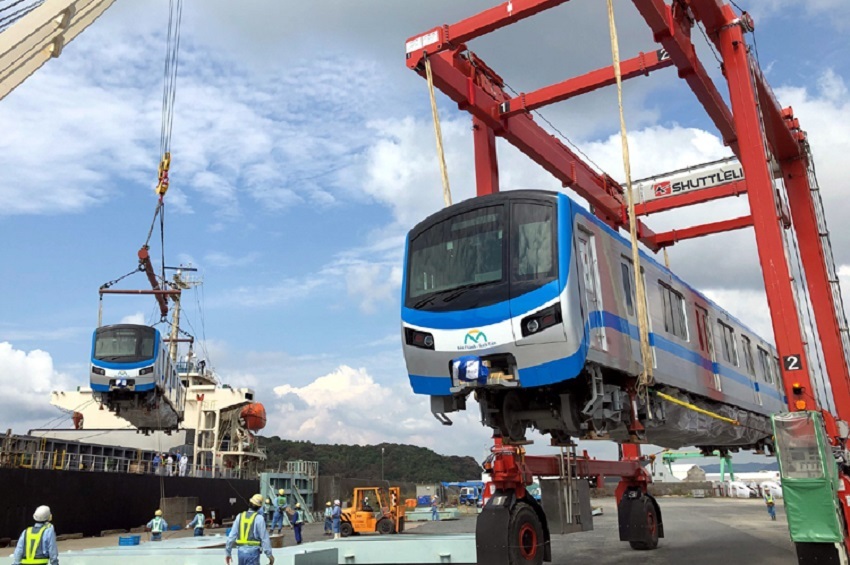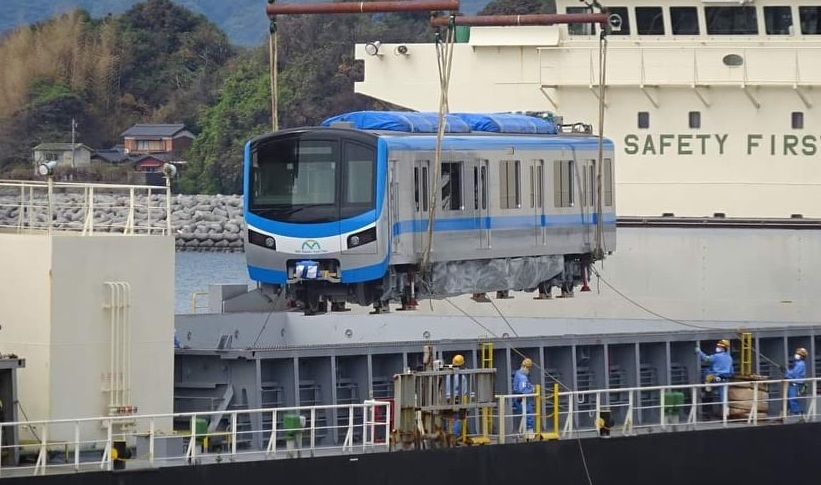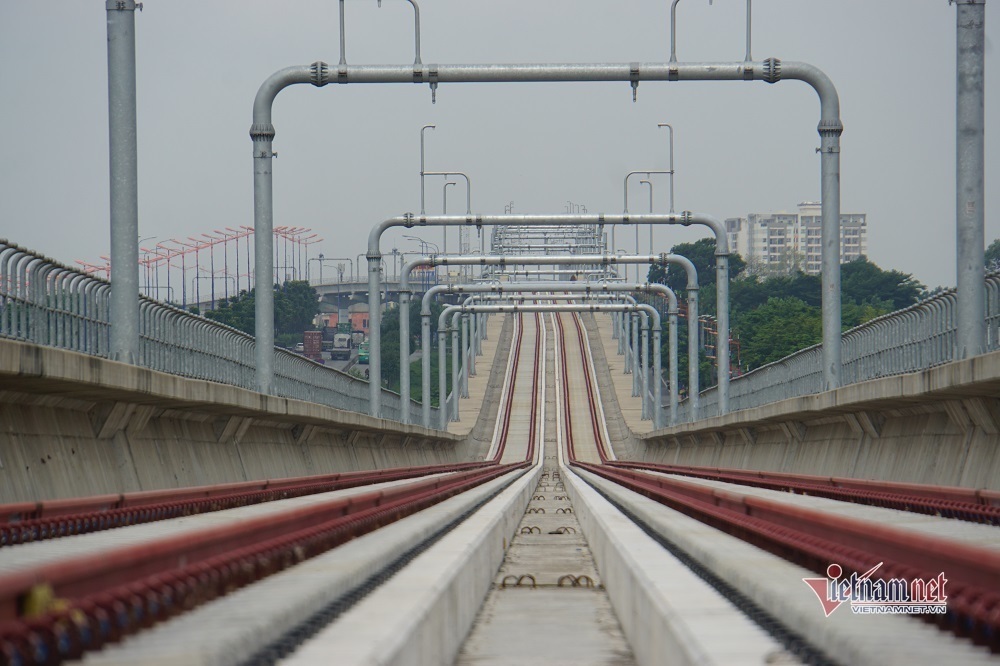 |
It will be transported to Long Binh depot in District 9 on October 10.
This is the train with the largest wagon width compared to other metro trains in Vietnam, with nearly 3m.
The train's body is made of aluminum ALLOY, with 2 types: initially it will be a 3-carriage train, then there will be the 6-carriage train.
The 3-carriage train can accommodate 147 seated passengers, and 783 standing passengers, totaling 930 people. The average standing area is 8 people per m2. The length of the 3-carriage train is 61.5m.
The height of the wagon (from the top of the rail to the air-conditioning system) is 4.08m; the height (from the top of the rail to the hood) is 3,655m. The maximum load is 16 tons. The design maximum speed is 110km per hour for the overhead section and 80km per hour for the tunnel.
The interior of the train is designed with a simple structure, suitable for daily use and easy to clean and maintain.
In terms of the exterior, the train shows a dynamic and modern image of the metro line 1. The first part of the train is rounded down to the bottom, striking with a 3D shape, creating a sharp view of the harmony and dynamism of the train.
 |
According to the Management Board of Urban Railways of Ho Chi Minh City, the preparation for receiving the first metro train of Ho Chi Minh City at Long Binh depot has basically been completed.
Items such as the control center, maintenance workshop, stop location ... are being completed for the trial run of the first two metro trains.
The metro line 1 will have 17 trains operating, all made in Japan.
 |
The maximum speed of these trains is 110 km per hour (overhead section) and 80 km per hour (underground section).
The overhead section from Binh Thai to Long Binh depot has had rails installed to serve the trial run.
Metro line 1 is nearly 20km long, from Ben Thanh in District 1 to Long Binh depot in District 9. The project has a total investment of more than VND43,700 billion. The route has 14 stations, including 3 underground and 11 elevated stations. Currently, nearly 76% of the workload has been completed. The city aims to reach 85% of the workload by the end of 2020 and put the line into operation by the end of 2021.
Tuan Kiet